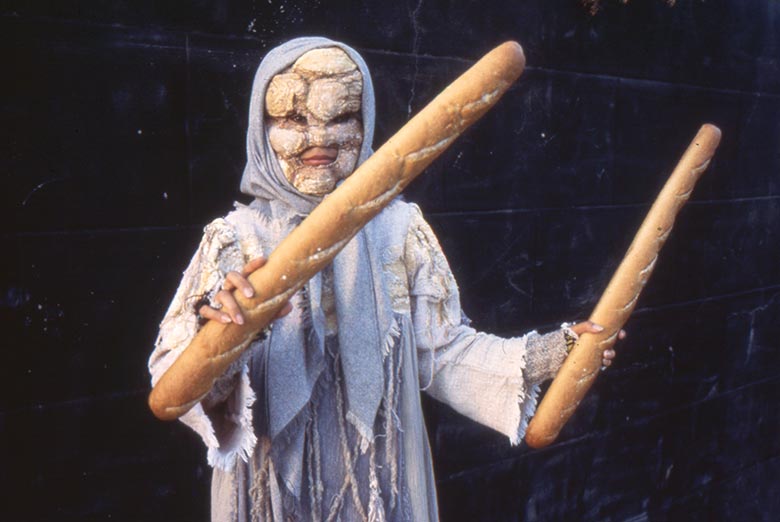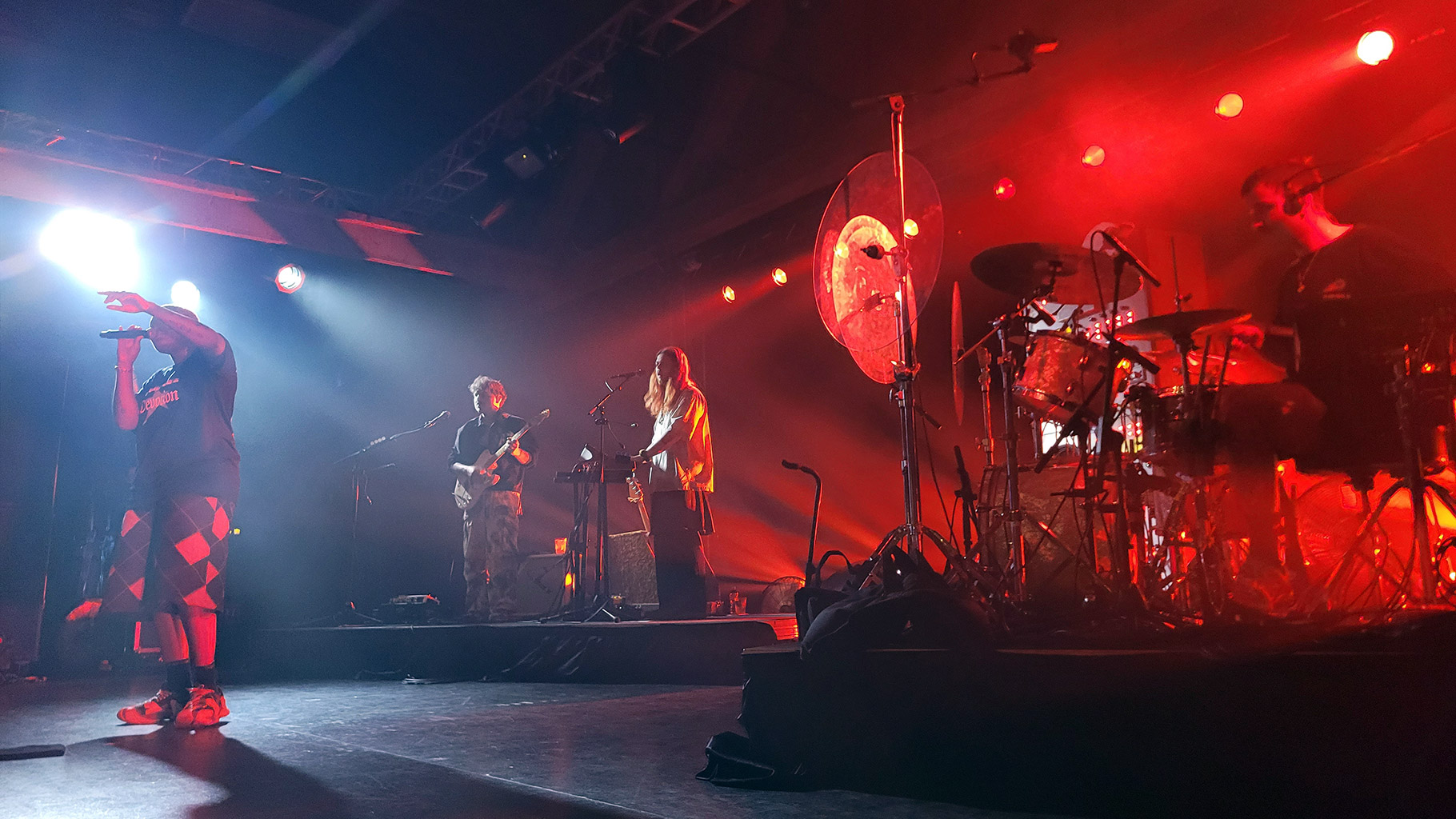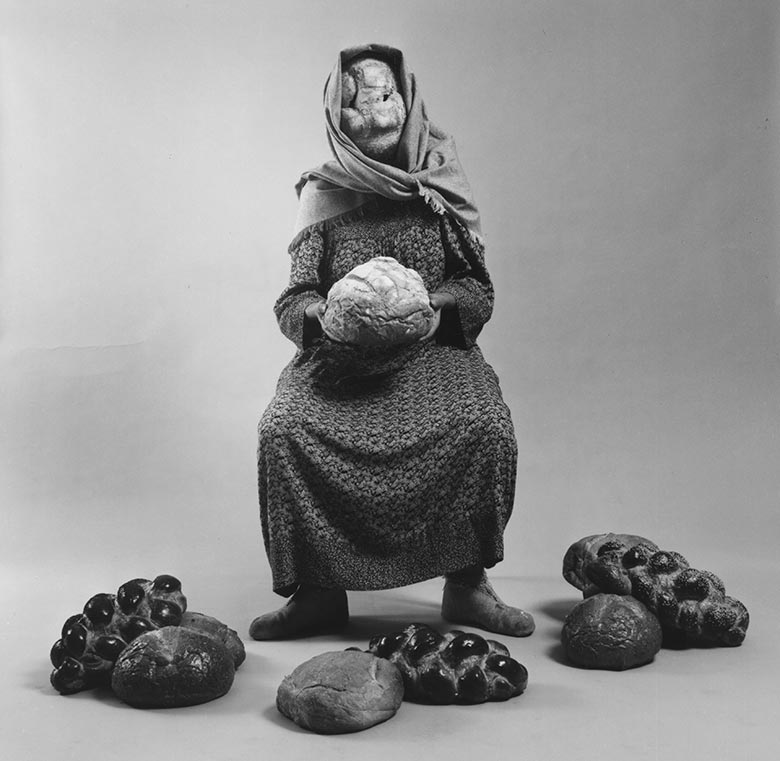 Photography by Susan Einstein
Photography by Susan Einstein
It’s 1982 in sunny Southern California. Picture a young Homler driving through the mountains in a blue Cadillac affectionately named “The Whale”. At this time, she’s yet to consider herself a musician, much less a singer — but suddenly, up comes a swell; a voice, from within, dispelling chants that sound like remnants of some forgotten language from some forgotten somewhere.
“My mother told me that when I was a little girl… when I was upset, I would talk in that language, or I would sing in that language,” Homler recalls. “But it didn’t emerge as so coherent a thing until that day, when I was driving through Topanga Canyon in my big Cadillac, through these narrow roads, and I just started chanting.”
Call it alien, call it past lives, call it magick — but Homler believes these sounds to be a part of her biology.
“I don’t know how to describe it, because it’s not scientific. It’s just my feeling — that it was songs my cells knew, more than a past life,” explains Homler. “It was really just kind of organic and natural — the way that babies make sounds. But this was melodic — and they had a sense of meaning embedded in them.”
Anna Homler – Breadwoman Tales & Trails Documentary
Honoring the Output
In trying to make sense of the unique and unexpected circumstance, Homler “went to every psychic and ooga-booga person in LA.” Yet no one had clear answers for her, asides from one woman in Highland Park, who was able to decipher the songs.
“But I really didn’t want to know what [the songs] meant,” Homler admits. “I didn’t really want my mental body involved with the process too much. I wanted to keep it really pure, if that makes sense.”
So Homler did what felt like the most natural thing: she taped her linguistic output with a cassette player she happened to have in her blue Cadillac, and later worked with minimalist composer Steve Moshier to create the final musical recording. Thus, Breadwoman was born, as a cassette release.
The eruption of these sounds was perfectly timed with shifts in Homler’s artistic interests, towards performance art and her work with writer Deena Metzger. For Breadwoman‘s re-release on the boutique label, RVNG Intl., the album booklet summarizes that Breadwoman “emerged in a specific cultural place: the perfect storm of early 80s Los Angeles, where performance art, renegade DIY punk, gallery culture, galvanized jazz, drag extravaganzas, and esoteric mysticism all crossed paths in that ancient ritual of youthful meaning-making.”
Fundamental to the formation of Breadwoman was Homler’s background in anthropology, which she’d studied at UCLA and Berkeley. Had she already been an artist, Homler believes she might have concluded, “Oh that’s just something I do” — but because her sudden singing and chanting had been so atypical, she ascribed to it great importance.
“All the ingredients were there for this to be honored, and to pay attention to this subtle occurrence that was happening,” explains Homler. “Because I don’t think if I had had that kind of artistic orientation or view — that I would have paid any attention to it.”
Breadwoman’s performative aspect, like the sounds, came purely from Homler’s innate desires. As she explains, she “really had this overcoming urge to [wear bread].”
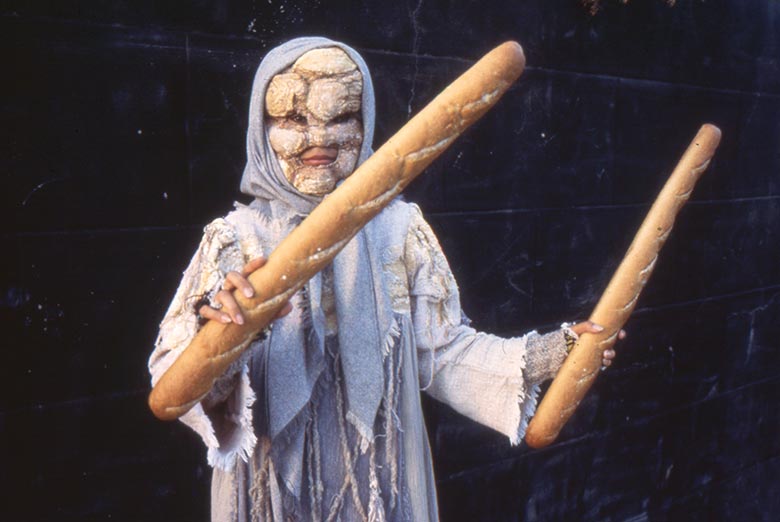
Though the Breadwoman image has been considered “ugly” by some — Homler mentions a cable TV interview where listeners called in to protest the look of the character — it has, by and large, been well-received by the public. Homler first brought it to the public through a series of “Breadwalks”, which first took place at Westwood Market in Los Angeles.
“It was like people already knew her. Like, oh, Breadwoman! Bread lady!” says Homler, who explains that later versions of the masks were not made bread and contained a variety of expressions, from friendly to menacing. “I literally wore bread [then], so people were very happy to see her.”
Homler is a Los Angeles native. She has seen the ebb and flows of the city’s arts culture, and she frequents a restaurant housed in the same location as one she frequented decades ago. More recently, for a video shoot related to the record’s 30th anniversary and its re-release, Breadwoman once again greeted the Los Angeles public, this tim with an appearance on Beverly Blvd. Though thirty years has passed, the curiosity towards Breadwoman has not changed.
“People were amazed and blown away… There is a reaction that I think I’ve always taken for granted, because I always did Breadwoman in the context of the art world — not on the street. Except for the first breadwalks. And I’m going, ‘Oh, right! People respond to her. They see her; they respond to her,'” says Homler, who describes Breadwoman’s latest mask as “friendly” and a “cross between Elephant Man and maybe a Peruvian doll.”
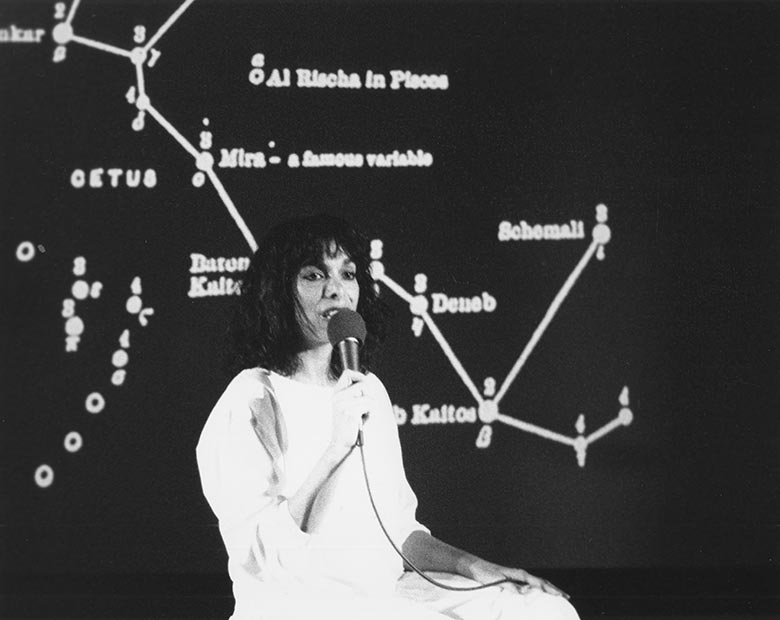
Associations Beyond Time
For Matt Werth of RVNG Intl., re-releasing Breadwoman was also a decision guided by feeling. After hearing the cassette at an installation by Ken Montgomery, Werth reached out to Homler, who had already been considering a re-release of 100 Breadwoman cassettes via a small Belgian label. Werth trotted out the idea of 1,000 CDs and 1,000 LPs — which would later be packaged with a beautiful booklet, a documentary video, and the promise to turn Breadwoman onto a new generation of listeners.
“There was something to the visual of Breadwoman, and it was fairly scarce… Coupled with the vocals, it was this completely haunting experience, so to be honest, I think I was haunted into putting out the record. And I knew it was something I needed to exorcise,” says Werth.
“But that was maybe my early experience with it,” Werth continues. “Then I met Anna, and realized there was this really charismatic puppeteer behind Breadwoman. It became a little less frightening and haunting, and a little more mischievous and folkloric.”
Werth became drawn to the mythology of Breadwoman, which he explains “exists beyond an archival collection, in some sort of infinite storytelling space.”
“I think somewhere between the myth and the music exists a portal,” he says.
While the indiscernible nature of the language certainly plays a role in propelling the expansive, timeless feel of Breadwoman, so too, does the purposely-constructed narrative.
“I imagined her as a woman that was so old that she lived in the center of the earth, and she was a witness to events. And she would sing to us,” says Homler. “She’s like an archetype. Like the bread mother. Like an Earth mother. Like Demeter. The goddess has many faces… [Breadwoman]’s another face of the goddess, because the goddess has many arms, many names, many aspects like, you know.”
“I think, if anything, I’m Hindu,” Homler continues. “Because I really like the idea of different manifestations of the same archetype or being.”
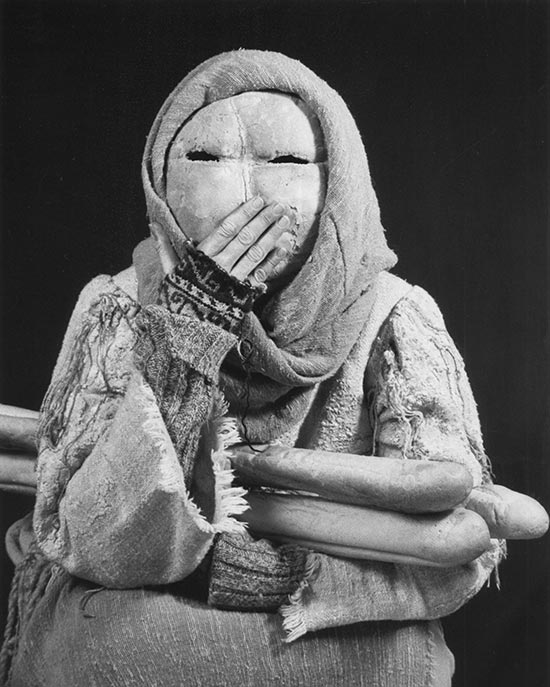
Shifting Through Realms
A multitude of influences finds its way into every aspect of Homler’s work. Interdisciplinary and performative as it is, it innately touches upon many facets — many of which do not require, and in fact work better without, a deep logical understanding of its magic.
“My work is all about shifting from the literal to the lyrical, and it’s actually a brain shift from one hemisphere to the other,” she explains. “When you read a poet, the language of some people shifts your consciousness. And that’s why I think that it’s not important to understand Breadwoman. It’s about frequency. It’s about the resonance of the sounds — without sounding weird or ooga-booga — but I’m sure in science, that could be backed up with sound. People feel more relaxed with certain kinds of music, and other kinds of music is really stimulating.”
In addition to a wide range of musical projects she has constantly in the works, Homler also has a fascinating homegrown project called Pharmacia Poetica, which is all about the transmutation of everyday objects, which are collected from different places and spaces with great intention.
The idea for the Pharmacia came to her during a six-week period that she had to be in quarantine for adult chicken pox, also known as shingles. That came fresh off the tail end of a performance called Search for the Letter R, which marked the first time that Homler sang as herself rather than as Breadwoman. The metaphor of “searching for the letter R” was akin to finding the language of Breadwoman — and it was through this type of performance art that Homler learned to pour all aspects of her creativity into one cohesive output.
“What I loved about performance art was that I could use everything. I could use my dreams, my images, my poetry, my music; it was a container that could hold it all, and it was a big Easter basket you could put all the different eggs into. And in this container, I say, there’s this customs zone between sleeping and waking, and you can’t always bring things across the border,” explains Homler.
“And that actually happened to me,” she continues. “I had a dream where the significance of the letter R was given to me by a voice in a dream, and I couldn’t bring it to waking. It needed to stay in the realm of dreams. And I really believe in realms. I do believe that the imagination is a real place. I do believe in what the Aboriginals called altarenga. The dreaming. Where the ancestors live. Where the songs live. Where the stories live. Where the archetypes live. I believe that.”
Navigating these realms and how they intersect in waking, in sleep, and beyond may be difficult, but Homler sees exploring the limits and overlaps as central to the artistic process.
“This is what poetry is for me, and what performance art is for me,” she shares. “These intersections of where the poetic can emerge from the Other, like flowers growing out of the cement… where a whole nother living reality can come in daily life. Where something that is very ordinary can reveal its secrets and mysteries.”
“And that’s what my Phamarcia’s about,” she concludes. “The bottles are the little worlds, where you actually focus intensely on one thing. It’s like visual homeopathy… in homeopathy, it’s all about the micro-dose, and that was the philosophy of the Pharmacia. Take the smallest sound and put it into the vast ocean of yourself, and you will affect a change.”
When asked to clarify how to use the items within the Pharmacia, Homler continues, “Well, just imagining. Or revolving. I think the Jungians would say circumambulating. Going around an image. Circling an image. Not dissecting an image, but dreaming.”
And in so many senses, the project of Breadwoman — and the inception of something that is born out of nothing, deeply rooted mostly in the mysteries of imagination — is just like the Pharmacia Poetica. It is tiny bits of information pulled from one unknown realm to another realm, then meditated upon and given meaning through context. It is information that lies both active and dormant simultaneously, waiting for the perfect time for its potent symbolism to emerge again. Breadwoman as Earth mother; Breadwoman’s sounds evoking infinity.
Anna Homler – A Collection of Mysteries Documentary
Ω

